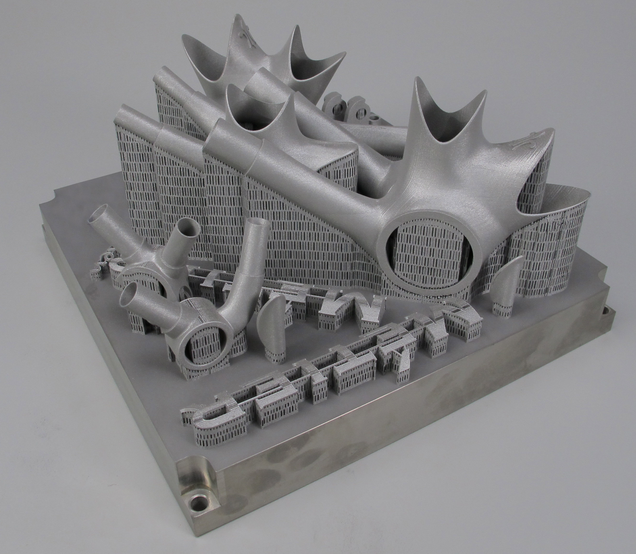Additive Manufactoring Changing The Economics Of Manufacturing
Digital manufacturing is rapidly changing the fundamentals of how products are developed, scaled and manufactured. By digitizing traditional manufacturing methods, including injection molding and CNC machining, and leveraging newer technologies, like 3-D printing, the industrial internet of things (IIoT) and artificial intelligence (AI), companies are optimizing their supply chains, reducing development cycles, increasing efficiencies, and driving down costs. The Fourth Industrial Revolution continues to gain traction and is completely changing the economics of manufacturing, for those willing to embrace the change that is.
Digital manufacturing is enabled by multiple manufacturing methods, but one area that has really grown has been industrial 3-D printing. Over the past decade, additive manufacturing technologies have really grown from hobbyist applications to industrial-grade equipment capable of producing engineering-grade, end-use components.
Additive manufacturing not only enables the creation of new products but is also influencing design. For example, if an engineer had complete design freedom for a plastic injention mould, how might he or she design it to accomplish the cooling step and reduce overall costs for the manufactured product? Redesigning the interior channels to cool the plastic more effectively might enable them to make a smaller mould and reduce process and material costs. They might also look to 3-D printing to consolidate and reduce the number of components and individual processes involved in their creation. Therefore, the real benefit of additive is really in the design freedom and assembly reduction, which unlocks tremendous opportunities in designing what previously was just un-manufacturable.
Cutting your Additive Manufacturing Production Time
Novicut-M 3D-AM Significantly Improves Productivity of your Metal Additive Manufacturing
Soon much more about AM

The most widely used process in 3D metal printing is probably selective laser melting.
3D metal printing, or more precisely selective laser melting (SLM), is a cost-effective and fast method for manufacturing prototypes and is suitable to produce complex geometries. With an optimized design and many parts to be produced, the process offers enormous economic advantages. In 3D metal printing, a powder layer of 0.02 to 0.06 mm is applied to the building platform by a scraper or coater. Then the laser starts melting the first layer. In the next step, another layer of powder is applied after the building platform is lowered by exactly one layer. The laser then fuses the first layer with the next. This process is repeated layer by layer until the entire component is completed. When the last layer of the part is finished, the metal powder is removed, and the part attached to the platform appears.
Which base plate or build platform fit on our machines?
Most important 3D metal printing machine makers from which our machine can seperate the parts from the base plate
Basicly all the platforms/buildplates of following brands can be separated from the parts in our different novicut-M models.
We mention here NOT all makers but most known! For other brands please ask us!
- AddUp (Michelin and Fives)
- Additive Industries
- Admatec
- Arcam (GE additive)
- Aurora Labs
- BeAM
- Concept Laser (GE Additive)
- Desktop Metal
- Digital Metal
- EOS
- HP Metal Jet
- Markforged Metal X
- Stratasys
- 3D Systems
- Renishaw
- SLM Solutions
- Sisma
- Trumpf
- DMG Mori
- Optomec
- Sciaky
- InssTek
- ExOne
- Digital Metal
- Vader Systems
- Pollen AM
- Cytosurge
- Matsuura
- 3DEO
- Airwolf 3D
- Xact Metal
- ...
